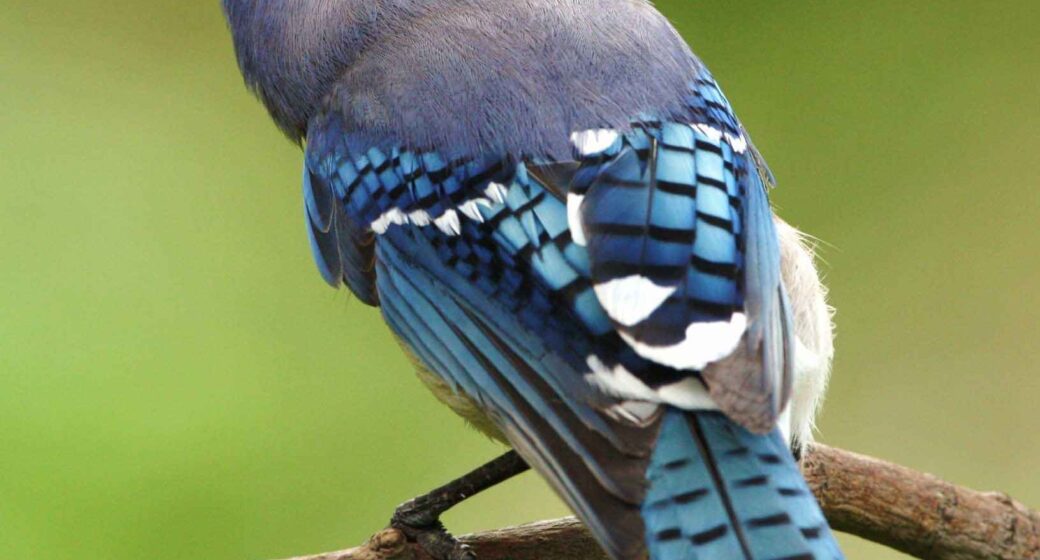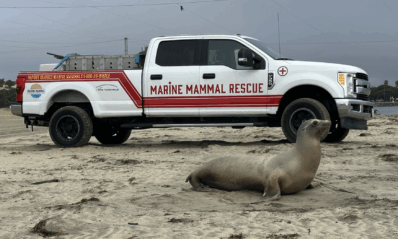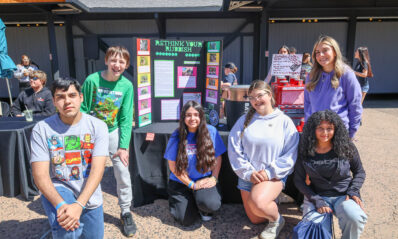
According to the U.S. Fish and Wildlife Service, collisions with building glass cause an average of 600 million bird deaths per year. Denver is situated along the busy Central Flyway, which migratory birds use to make the annual journey from their breeding grounds in the north to their wintering grounds in the south. More than 300 bird species pass through or nest in this essential corridor, and the majority of the fatal collisions occur during peak migratory seasons-particularly at night, when birds are on the move.
While there is no single solution to this deadly conflict, there are a variety of small, everyday conservation actions that organizations and individuals can take to help reduce the number of casualties. In celebration of World Migratory Bird Day (May 14), we caught up with Katie Vyas, Director of Animal Welfare, to find out exactly how Denver Zoo is working to create a safer world for birds…and what you can do to help!
Fatal Attraction for Flyers
Humans, like animals, need water to survive. That’s why cities spring up along riparian corridors, like our very own South Platte River basin. Of course, avian migratory routes also tend to follow rivers, as they are natural sources of food, water and shelter. Birds, unfortunately, cannot see glass; they only see what the surface reflects. This is problematic both during the daytime, when these surfaces reflect the surrounding foliage and sky, and after dark, when interior lights can attract and confuse nighttime migrators.
Stopping On-Campus Collisions
Almost any building glass can be deadly to birds, from LoDo skyscrapers to your living room windows-and even some of the buildings on our 84-acre campus. Just over three years ago, Denver Zoo began collecting data on native bird strikes. We identified three problematic areas: our gorilla habitat, our clouded leopard habitat and Village Hall. Thanks to a generous donor who funded the installation of anti-bird-strike window decals, we’re happy to report that no additional bird deaths have been recorded!
Powerful Partnerships Take Flight
While Denver Zoo is home to ~3,000 animals representing ~450 species-many of them avian-we’re still just a tiny slice of the Mile High City! So, we’re thrilled to be working with several local and national partners towards a more comprehensive solution to this very man-made problem. Here’s a quick roundup of these organizations and how their efforts combine to support a safer environment for birds.
Urban Bird Treaty (UBT): Founded in 1999, this program is a unique collaboration between the U.S. Fish and Wildlife Service and American cities dedicated to protecting local and migratory bird populations. Since becoming a designated UBT member in 2014, the City of Denver has onboarded local entities such as Denver Parks and Recreation and Rocky Mountain Arsenal National Wildlife Refuge to participate in habitat conservation, invasive species control and light management programs like the one below.
Lights Out Denver (LOD): Part of Denver’s commitment as a UBT city, Lights Out Denver works to boost awareness of migratory bird collisions with the city’s buildings, with the goal of preventing as many as possible. In addition to educating homeowners and businesses about the dangers of building glass and how to make windows safer for birds, LOD uses BirdCast to anticipate migratory swells and request “lights out” nights in order to reduce collisions. Denver Zoo is proud to support this important work by assisting with research on downtown bird strikes during spring and fall migrations.
SAFE North American Songbird (NAS): As an accredited member of the Association of Zoos and Aquariums (AZA), Denver Zoo is also an active supporter of Saving Animals from Extinction: North American Songbirds. Since 2019, this program has harnessed the collective expertise of its member organizations to work towards secure sustainable wild populations of North American songbird species. Created and managed by zoo-based conservation organizations like ours, NAS is an effective combination of education, on-the-ground conservation and civic action.
Citizen Conservation: What YOU Can Do
Wildlife conservation is a group effort-and if you’ve read this far, you’re just the kind of person we need! Here are a few relatively easy things you can do to support a healthier environment for birds, both those that are just passing through your neighborhood and the ones who share our city year-round.
1. Keep cats indoors (or contained in a “catio”). Cats kill an average of 2.4 billion birds/year.
2. Reduce evening lighting, particularly during peak spring and fall migratory seasons.
3. Bird-proof your windows with bird-safe glass or decals + by keeping plants at a distance.
4. Choose sustainable products like certified Bird Friendly® coffee + grass-fed beef.
5. Become a community science volunteer with Lights Out Denver. Click here for details.








